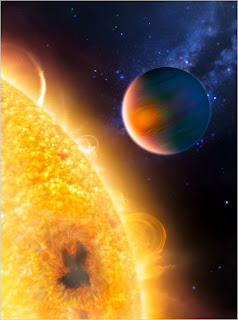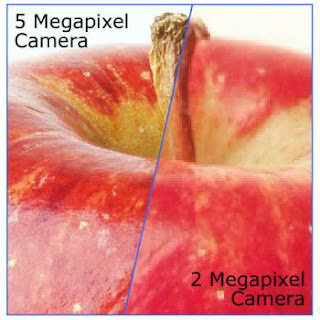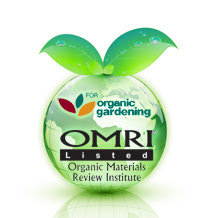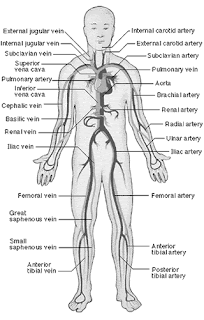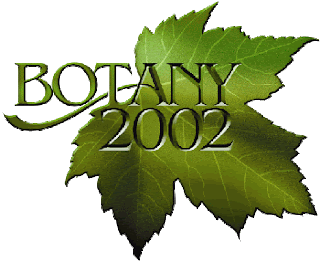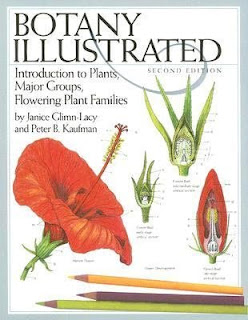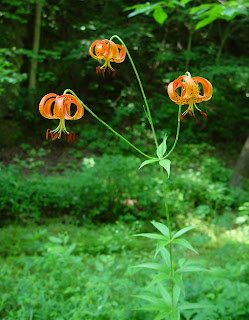 3. Aerial stems – Some aerial parts of plants possess several buds, sufficient water and stored food. These parts can form new plants when detached and planted. Sugarcane is propagated from the stem portions. A piece of stem containing one or more nodes having buds is cut and planted in the soil. Soon the buds sprout and for aerial shoots and adventitious roots.
3. Aerial stems – Some aerial parts of plants possess several buds, sufficient water and stored food. These parts can form new plants when detached and planted. Sugarcane is propagated from the stem portions. A piece of stem containing one or more nodes having buds is cut and planted in the soil. Soon the buds sprout and for aerial shoots and adventitious roots.4. Bulbils – These are the specialized fleshy buds. Bulbils form new plants when they fall on ground. These bulbils arise in the axils of leaves in lily and dioscorea bulbifera. In Garlic the bulbils are formed on the inflorescence axis and replace flowers. They occurs over the swollen root in Oxalis and adjacent the fruit in Pineapple
5. Leaves – Some leaves produce adventitious buds, e.g., Begonia, Bryophyllum, Walking fern, etc. Begonia can give rise to adventitious buds on the lamina veins and petiole. When its leaf is injured and placed in the soil, new plants are formed by adventitious buds. In Bryophyllum the adventitious buds are borne on a suitable soil, many of the buds sprout and form new plants. In walking fern (Adiantum caudatum), the tips of the leaces can produce buds on touching the soil. These buds grow and form new plants.
Artificial vegetative reproduction
Vegetative reproduction is a type of artificial method of reproduction. These are common in many horticulture plants. These are useful for
a) Quick production of new plants,
b) Quick formation of seeds and fruit, and
c) Combining the good qualities of two varities.
The common methods used for artificial vegetative propagation are
I. Cutting
II. Layering
III. Gootee
IV. Grafting
V. Approach grafting
VI. Budding
VII. Tissue culture
1. Cutting – Cutting is a very common method of vegetative propagation of a desired variety. A cutting is a pieces of stem, root or leaf which has or can form one or more buds. Roots cutting is done in case of blackberry and raspberry.
Generally stem cutting is very common in horticultural plants. Stem is taken from a one-year old shoot and cut below one of the nodes and is of 20-30 cm in length. The lower part of the cutting (towards the former root) is defoliated and placed vertically in the soil. After some days the lower end of cutting produces adventitious roots and becomes an independent plant. The usual time of the planting of cutting is the spring. The success of the cutting depends upon its capacity to form adventitious roots.
Now-a-days, special growth hormones like IAA, IBA, NAA and terpenoids are applied in very dilute quantities to the lower end of the stem cutting. Their applications quicken the formation of adventitious roots. Stem cutting are done in Roses, Sugarcane, Citrus, Bougaimvillea, etc.
2. Layering – It can be carried out in those plants which possess soft branches near the soil. A long basal leaf branch of the plant is selected for layering. Such a branch is known as layer. It is pegged down in the soil or in a pot. The horizontal pegged part is defoliated. It is then injured in the median or sub-apical region by giving one of the following types of cuts.
I. Tongueing – an oblique cut is made.
II. Ringing – a ring of bark is removed at a sufficient length.
III. Notching – a “V” shaped cut upto the half of the width.
Layering is carried out the propagation of Grapevine, Jasmine, Ipomoea, etc.
3. Gootee – It is a method very similar to layering and hence is also called air layering. It is carried out in those plants where the branches are hard e.g., Litchi, Orange, etc. Gootee is done early during rainy season.
A healthy somewhat woody shoot is selected. A 2-5 cm ring of bark is removed towards the base of the branches. Alternately a notch or longitudinal cut can be given. The injured part is covered over by grafting clay and then wrapped by a waterproof plastic or polythene bag. The grafting clay is made up to clay (2 parts), cowdung (1 part) and some finely cut hay. A small quantity of root hormone (auxin) may also be added. It is then made into paste in water. After 1-3 months the root will appear at the injured region. Branch is now cut below the bandage and planted soil.
